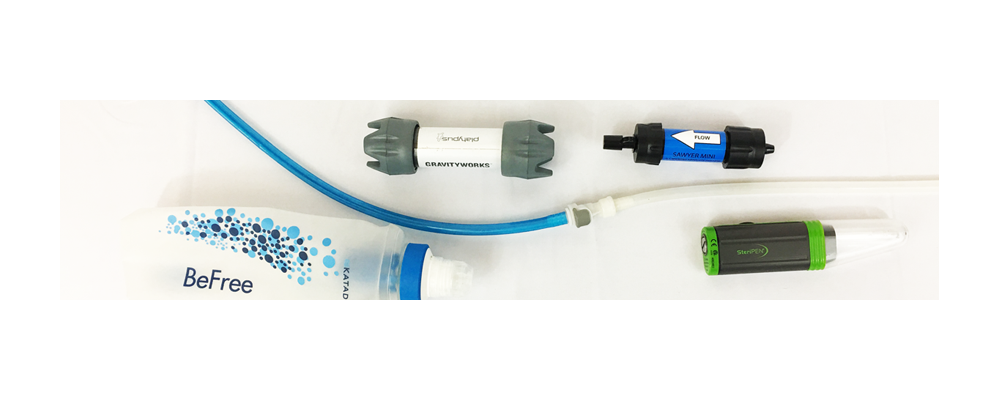Hiking is one of the most relaxed and fulfilling things – so little to think about. On a through hike, the next source of water on the trail is one of the very few things to think about.
With the exception of a few metal objects, water is likely to be the densest thing in/on your pack. Carrying too much water is an unnecessary burden even on a short hike. Carrying too little can lead to dehydration – which can be extremely bad for you. It is possible to stay alive for weeks without food but only few days without water. It is possible to become seriously dehydrated even on a short day hike. Whilst it’s heavy, always err on the side of caution.
The amount you need will vary largely depending on your personal metabolism, how hot you are, how strenuous the hike is and many other factors. Try to simulate the conditions ahead of time to get a feel for how much you’ll need.
Of course the availability of new water, and where it’s coming from, plays a huge role in how much to have on your person and how to make it drinkable.
Making water drinkable (potable)
There are many methods. Ideally, always take clear, clean looking, running water. If it is not, try to filter it with a cloth/paper towel or wait for it to settle. This is especially important when boiling, using tablets or UV light. These techniques may not get into the particles. Filters will probably work fine, but they will clog up quickly. There is no need to take anything specifically for this task, make use of a small camp towel or Buff.
- Filters. Probably the most commonly used technique. Filters can attach to water bottles and are often combined with water bladders. See Hydration Systems.
 Purification Tablets. These come in a number of varieties, a common one is Potable Aqua, read the instructions and check the ‘use by’ date before you leave. Tablets usually take 30 minutes or more and can leave the water tasting peculiar. This is my usual back-up.
Purification Tablets. These come in a number of varieties, a common one is Potable Aqua, read the instructions and check the ‘use by’ date before you leave. Tablets usually take 30 minutes or more and can leave the water tasting peculiar. This is my usual back-up. UV Lamps. Dentists, hairdressers and others have been using UV rays to sterilize objects for a very long time. They work by emitting a wavelength around 260 nm. This light breaks down the molecular bonds within a bacteria’s DNA and kills it. Of course the light has to actually reach the bacteria and so this technique is not going to be effective on water with large particles in it. These invisible ‘torches’ also rely on batteries or some other power source. I really like this technique, however, it all seems a little too magical… The other schemes provide more tangible evidence in their efficacy. I’ve used the SteriPen Ultra UV many times, either I was very lucky, or it did the job.
UV Lamps. Dentists, hairdressers and others have been using UV rays to sterilize objects for a very long time. They work by emitting a wavelength around 260 nm. This light breaks down the molecular bonds within a bacteria’s DNA and kills it. Of course the light has to actually reach the bacteria and so this technique is not going to be effective on water with large particles in it. These invisible ‘torches’ also rely on batteries or some other power source. I really like this technique, however, it all seems a little too magical… The other schemes provide more tangible evidence in their efficacy. I’ve used the SteriPen Ultra UV many times, either I was very lucky, or it did the job.- Boiling. Takes time and fuel and so not favored. Clear/clean water will need at least 1 minute of vigourous boiling. Water boils at lower temperatures at altitude, add 2 more minutes for every 6,000 feet above sea level.
- Distillation. Probably more of a survival technique rather than a backpacker’s go-to. Distillation involves turning water into steam/vapor through boiling or evaporation and collecting the droplets which form though condensation. A topic too big for here. See this from the Red Cross.
All this drinking water needs to be carried. In order to save weight and time, the purification and transportation of water can be combined into a single lightweight Hydration System.

